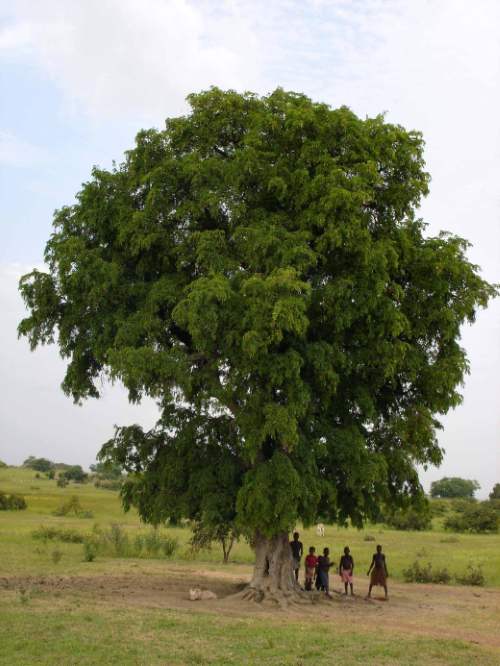Tamarind
Tamarind is most widely distributed fruit-tree of the tropics. The pods or legumes are edible and are used extensively in cuisines around the world. The tamarind tre is a slowly growing, long lived, massive tree, that can become 25 meters high and is a fine shadow tree.
tamarinde pods, legumes
As the pods mature, they fill out somewhat and the juicy, acidulous pulp turns brown or reddish-brown. When fully ripe the shells are brittle by hand and easily broken The seeds are embedded in the brown, edible pulp and must be removed. . The pulp has a pleasing sweet and sour flavour and is high in both acid and sugar. There are wide differences in fruit size and flavour in seedling trees.tamarinde pasta
The mature pods have a brittle shell that can be broken. The pods contain some seeds embedded in sweet and sour pulp. This sticky pulp is the edible part. The pulp has a pleasing sweet and sour flavour. Apart from culinary uses, the pulp is used as laxative.tamarind candy
Tamarind candies are cheap and popular and can be easely made yourself by adding water and much sugar to tamarind pods. After boiling, remove the seeds. Add a bit of salt and cayenne powder.tamarind sirop
Tamarind sirop can be easely made of (fresh tamarind pods: Remove the hard shell from tamarind pod and discard. Boil with a little water and plenty sugar. Remove during the boiling the seeds and shell parts. Finished.tamarind roasted seeds
Tamarind seeds are roasted, soaked to remove the seedcoat, then boiled or fried, or ground to a flour or starch. Roasted seeds are ground and used as a substitute for, or adulterant of, coffee. The roasted seeds taste like peanuts.
tamarinde leaves
The leaves of the tamarinde are bright green and pinneated and feathery. The leaves close at night. During the dry season the leaves will fall off the tamarinde tree.
The tamarinde tree is often used as an attractive shade tree.
tamarind wood
Most of the tree consist of light yellow sapwood and this sapwood can't be used: It spalts easy and is non-durable and prone to insect and fungal attack. The heartwood is reddish is color and very resistent against parasites, like termites. Tamarind is a very slow growing tree and only the large, old trees contain this heartwood. It has little use because of its high density and is generally considered difficult to work. Most old trees are hollow in the center.
The Common Striped Squirrel (Palm Squirrel) Funambulus palmarum on a Tamarind Tree.
Oriental Memoirs, Vol. III, by James Forbes ,1812-13. Drawn and painted in Bombay around 1779.
tamarinde harvesting
It take about half a year before the pods are ripe and fall of the tree.
By shaken the branches the harvesting can be speed up. Hitting with a stick is not
a good method as it damages the flowers.A mature tree can be extremely productiv, producing up to 250kg of pods yearly.
